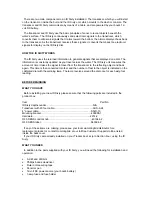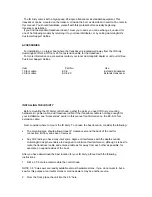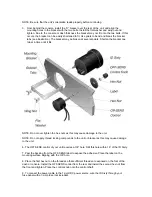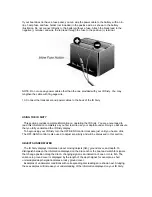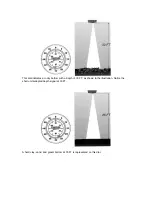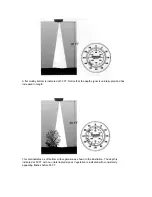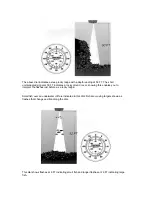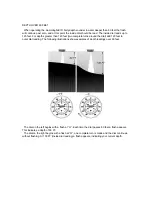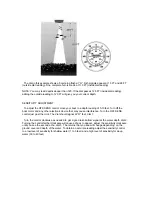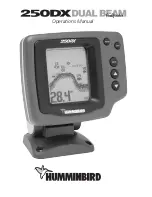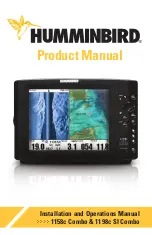
If your boat does not have a fuse panel, you can wire the power cable to the battery with an in-
line 1-amp fuse and fuse holder (not included) in the positive wire, as shown in the battery
illustration. Do not connect directly to the battery without a fuse. Attach the black lead to the
negative (-) terminal, and wire the red lead through the fuse to the positive (+) terminal.
NOTE: Do not use any power cable other than the one provided with your ID Sixty. You may
lengthen the cable with 18-gauge wire.
10. Connect the transducer and power cables to the back of the ID Sixty.
USING THE ID SIXTY
This section provides complete information on operating the ID Sixty. You are encouraged to
read this information completely as you first learn to use your depth sounder. Doing so will ensure
that you fully understand the ID Sixty display.
To begin using your ID Sixty turn the OFF-SENS control clockwise just until you hear a click.
The OFF-SENS control is also used to adjust sensitivity and will be discussed in this section.
OBJECTS UNDER WATER
The ID Sixty displays information about moving objects (fish), ground cover, and depth. To
distinguish between the information displayed on the dial, anchor the boat and watch for signals
that change position along the dial. A changing signal is an indication of one or more fish. The
variance in ground cover is displayed by the length of the depth signal, for example, a short
uninterrupted depth signal indicates a rocky ground cover.
Examples of underwater conditions with corresponding dial readings are shown next. Studying
these examples will increase your understanding of the information displayed on your ID Sixty.
Summary of Contents for ID Sixty
Page 1: ......


